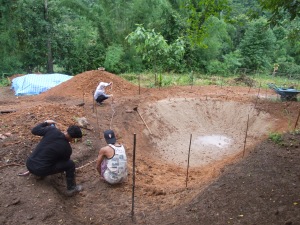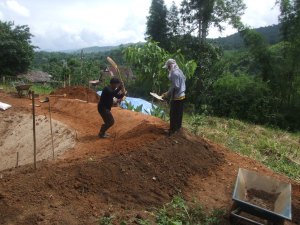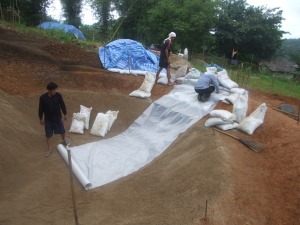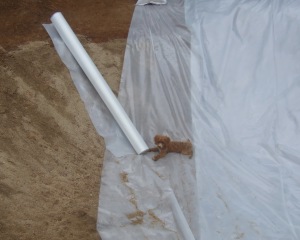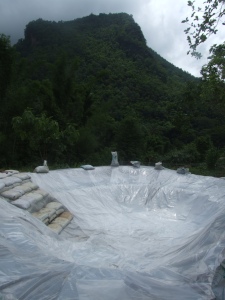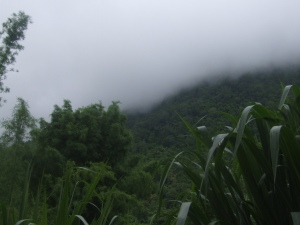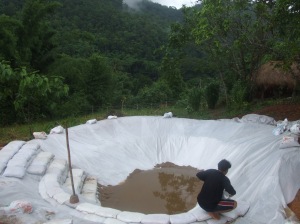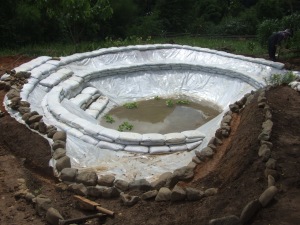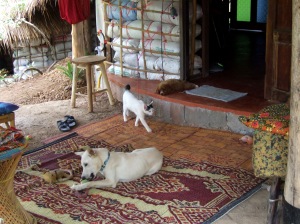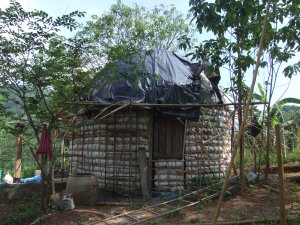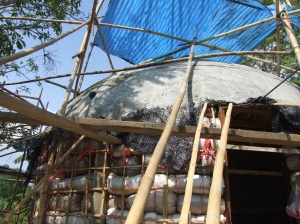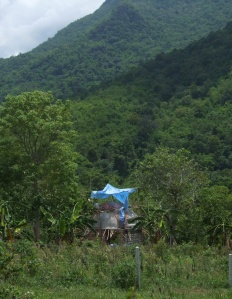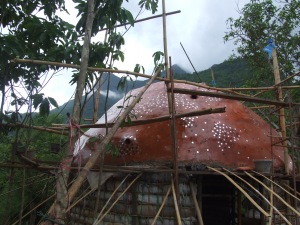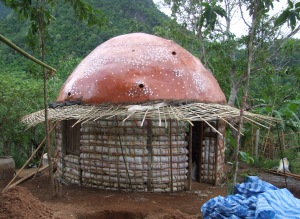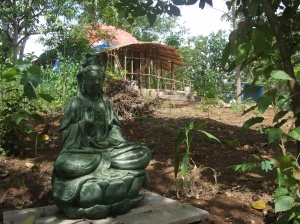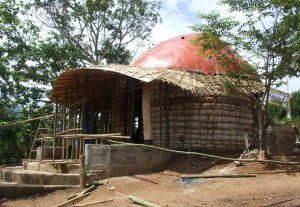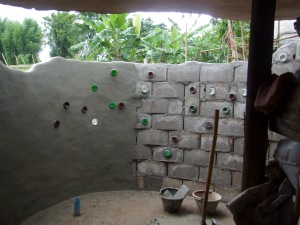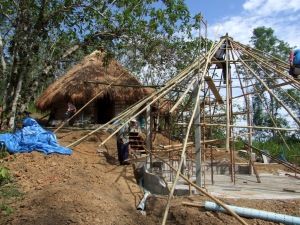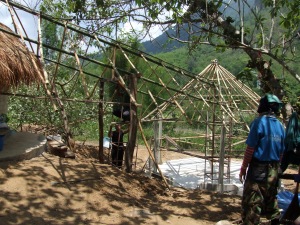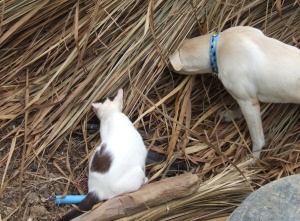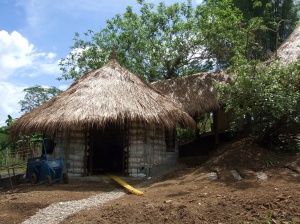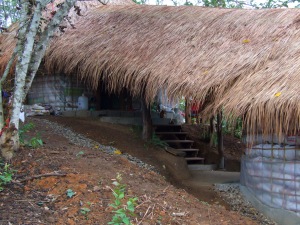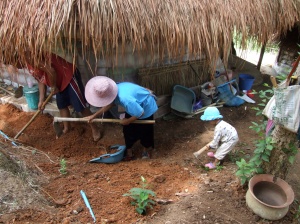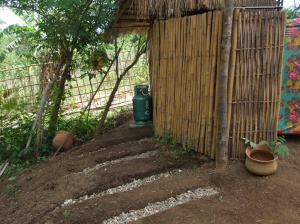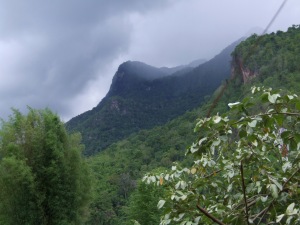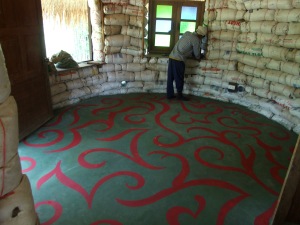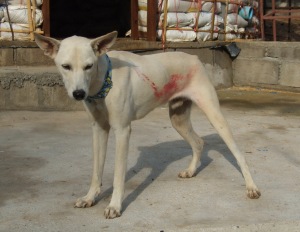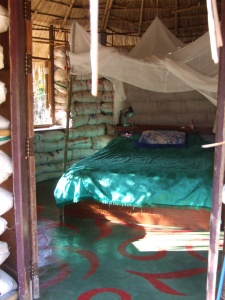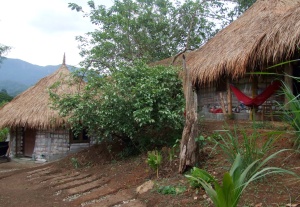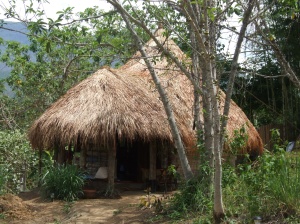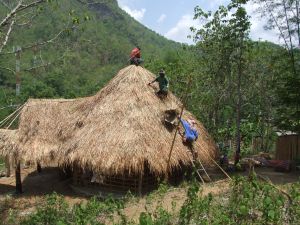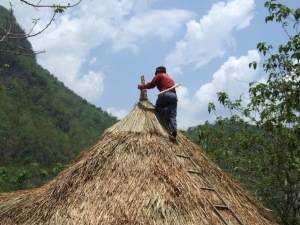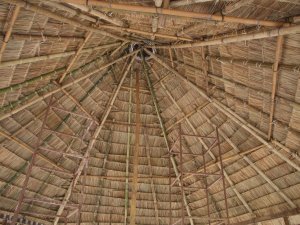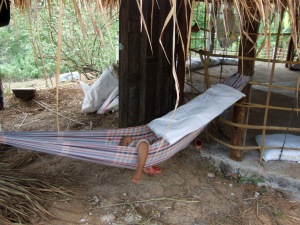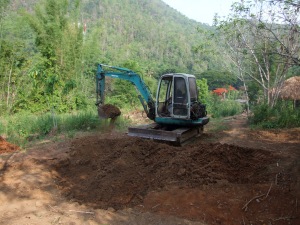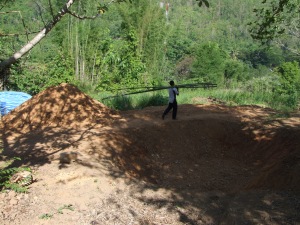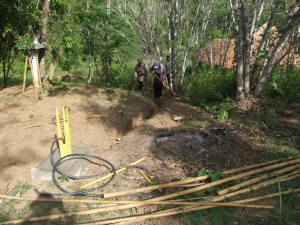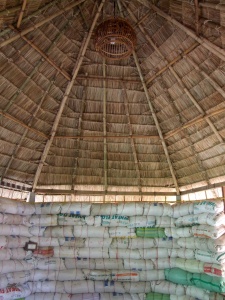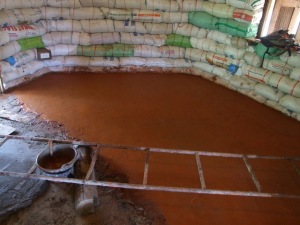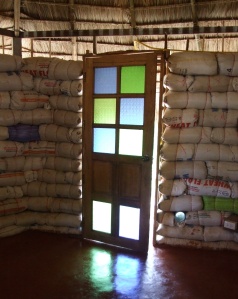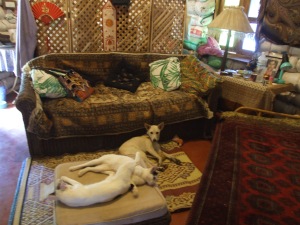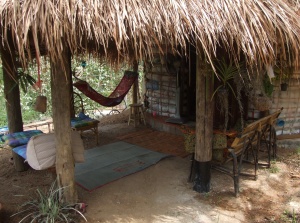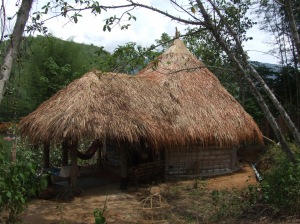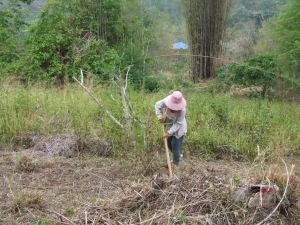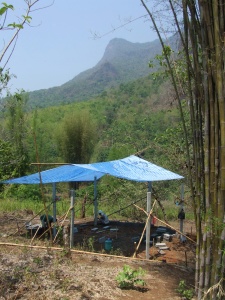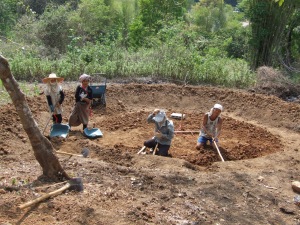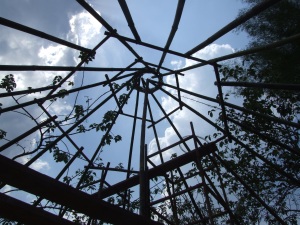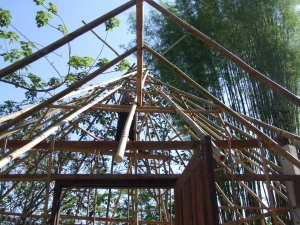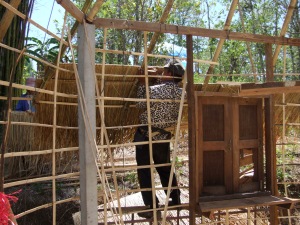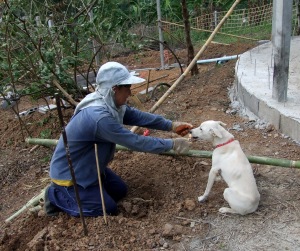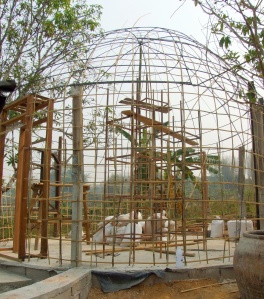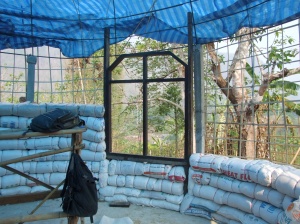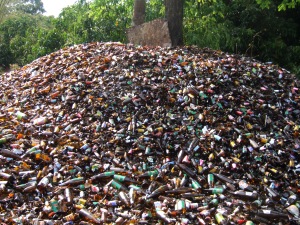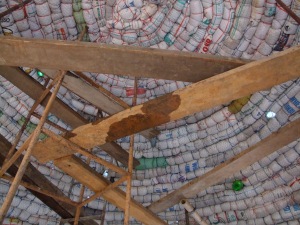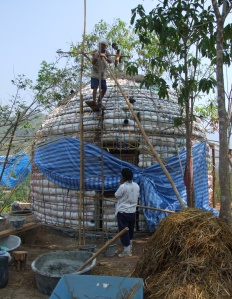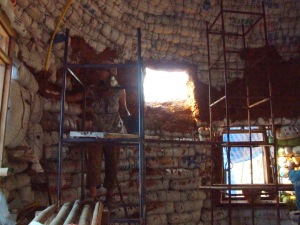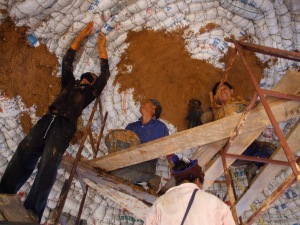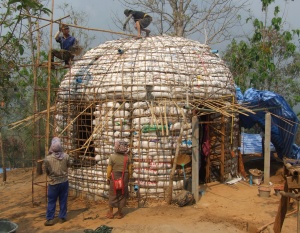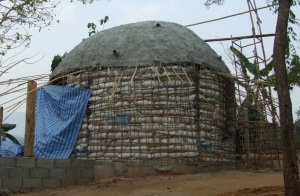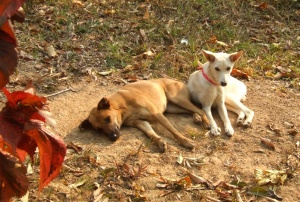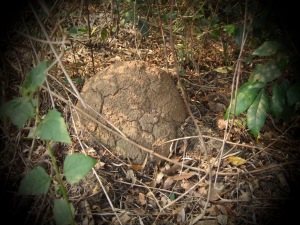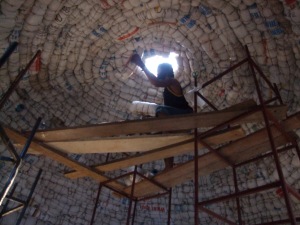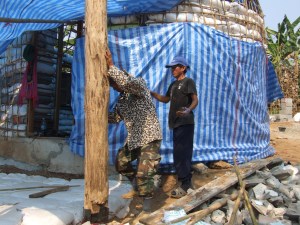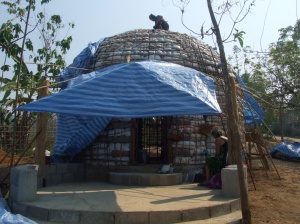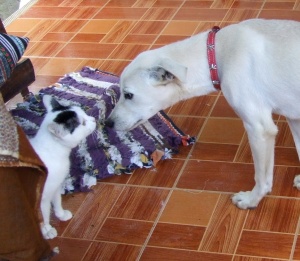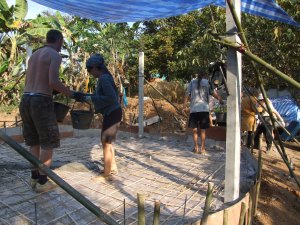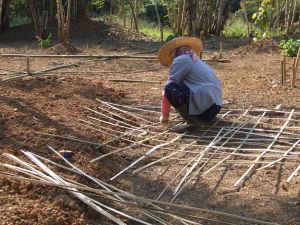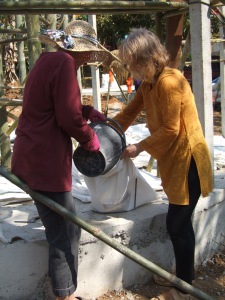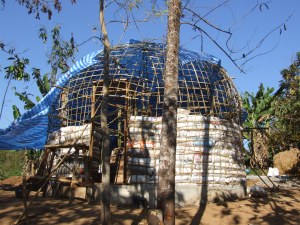Exciting building experiences for you! This Blog is to introduce you to the three great workshops that we are planning for January and February, 2014.
Not only will the building be fun and informative, but you will be living in a village in northern Thailand, an experience in itself. The local population are friendly and helpful, the scenery spectacular, and the pace of life perfect for de-stressing, relaxing and re-energising.
There will be 3 workshops:
Building a Roundhouse with Maggi McKerron (me!)
6th January to 1st February 2014
Building an Earth Oven with Sally Francis
5th and 6th February 2014
Building an Earthbag Dome with Paulina Wojciehowska
10th to 18th February 2014
First Workshop:
A Roundhouse 6th January – 8th February 2014
The first workshop will be to build a roundhouse similar to the photo above, using a mix of local and conventional materials, and incorporating a number of different building techniques.
This is a practical hands-on workshop taught by yours truly, Maggi McKerron, who, as those of you following this blog will know, has been building Roundhouses practically every day since November 2013!
This will be a 4 week workshop, but each week will be separate, from Monday to Saturday.
You can choose which week/s you want to come. (Excellent discount for those coming for the complete course.)
Week One – Foundations 6 – 11 January 2014
Using local techniques, you will learn to prepare the foundations for a round building on sloping ground, including installing a French drain, concrete and bamboo base.
Week Two – Birdcage 13 – 18 January 2014
We will build a ‘birdcage’ of bamboo and set in the windows and doors.
Week Three – Walls and Roof 20 – 25 January 2014
Learn how to make thatch using long thin leaves folded over a thin piece of bamboo. We will then attach the thatch to the roof. The walls will be made by attaching bags of rice husks to the “birdcage’.
Week Four – Plaster 27 Jan – 1 Feb 2014
Get muddy! We will cover the bag walls with a mix of earth and straw. If there is a delay in drying before a fine plaster can be added, there are other buildings on which we can learn about earth plaster finishes.
After the workshop: You will be welcome to stay on and help with the finishing off, and putting in the mosaic floors and decorations. (Pay for food and accommodation only.) Bring your imagination to suggest and execute decorations!
Warning! This is a natural building, people-power only (no machines) and things happen – weeks could overlap. For example, it could rain which could make the foundations take longer. The ‘birdcage’ might be finished before the end of the Week Two. BUT we will not start on the thatch until the beginning of Week Three, so that people arriving for that week will be sure to get the experience they expect. A ‘week’ might be 5 – 7 days.
Cost:
One week workshop £150 (Discount for all 4 weeks £500)
EARLY BIRD DISCOUNTS available – before October 2013!
Price includes excellent food (mostly Thai vegetarian)
BOOK NOW
to ensure your place!
Email Maggi at maggimck@yahoo.com with your preference dates. I am happy to answer any questions.
Second Workshop:
An Earth Oven (Sally Francis) 5th and 6th February 2014
Building an earth oven for master bakers Juergen and Mem of Chiang Dao, this hands-on two day workshop will show you all you need to know about building an earth oven at home.
Workshop taught by Sally Francis www.ecorefab.co.uk an experienced natural builder who works professionally with natural products for decoration, refurbishment and building, to ensure good health and benefits for her clients and the environment.
Contact Sally sally@ecorefab.co.uk
Cost: £70 (including food)
Early Bird (before October 2013) £60!
Third Workshop:
Earthbag Dome (Paulina Wojciehowska) 10th to 18th February 2014
Taught by master natural builder Paulina Wojciehowska www.earthhandsandhouses.org Building with Earthbags or Superadobe. A rare opportunity to build a 4m diameter dome which will be used as a space for contemplation and meditation. The workshop will include foundations, making the dome and arch, and some clay plastering. After this workshop there will be an opportunity to stay on as a volunteer and participate in finishing the dome.
For more information email Paulina at info@EarthHandsAndHouses.org or phone UK 01825 713349
Cost:
360 Euros
Other Information:
Accommodation:
There are good guest houses (mostly about £10 – 20 per day or monthly rates £50 – 120) in walking or bicycle distance. (Need to be booked in advance as this is the busy holiday season in Thailand.)
If there are enough people who would like to camp on site, this could be arranged (turning existing dome into dormitory) or bring own tents and sleeping bags. Warning: it is COLD at night!
Chiang Dao:
There are plenty of lovely experiences to enjoy in Chiang Dao – weekly market with people coming down from the mountains to buy and sell local products – hot springs – wonderful walks – 2 day climb up Mount Chiang Dao (2175 meters) – visit an elephant camp.
How to Get to Chiang Dao:
Nearest airport – Chiang Mai. Many flights daily from Bangkok.
Nearest train station – Chiang Mai, day or night train from Bangkok.
From Chiang Mai to Chiang Dao (Hour and half) – Bus or aircon mini-bus from Chang Puek Bus Station (approx every half hour – last bus about 4.30 pm)
Aircon taxi from Chiang Mai International Airport to site appox. £30
Coach from Bangkok to Chiang Dao.
From Chiang Dao to site (10 minutes) – Yellow ‘song taew’ (converted pick-up truck) to Chiang Dao Roundhouses (or to your guest house).
If you get lost, phone Maggi 0874961571








